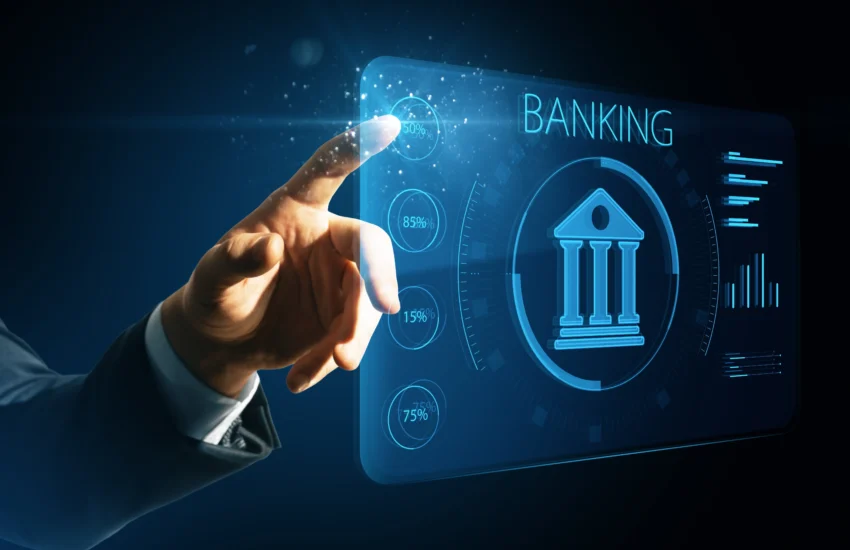Banking has undergone significant transformations in recent years, and technology is at the heart of these changes. From mobile banking apps to artificial intelligence (AI) and blockchain, technology is revolutionizing the way financial institutions operate and how consumers manage their money. In this article, we explore the impact of technology on the banking industry, the trends shaping its future, and the benefits and challenges that come with these innovations.
1. Mobile Banking: A Game-Changer for Convenience
Mobile banking has become a staple for consumers, allowing them to access their accounts, transfer money, pay bills, and even apply for loans from their smartphones. The convenience of mobile banking has made it easier for people to manage their finances on the go.
- Increased Accessibility: Consumers can now manage their finances from anywhere, at any time, without the need to visit a physical branch.
- Enhanced Security Features: Banks are leveraging biometric authentication, two-factor authentication, and AI-driven fraud detection to ensure the security of mobile transactions.
- Digital Wallets: Services like Apple Pay, Google Pay, and Samsung Pay enable customers to make quick and secure payments using their smartphones.
2. The Role of Artificial Intelligence in Banking
Artificial intelligence (AI) is transforming how banks operate by automating processes, improving customer service, and enhancing decision-making. AI-powered tools are being used in various areas of banking, from customer support chatbots to risk assessment models.
- Chatbots and Virtual Assistants: Banks are implementing AI-driven chatbots to handle routine inquiries and provide 24/7 customer support. These virtual assistants can answer questions, resolve issues, and even help customers with financial advice.
- Fraud Detection: AI algorithms are used to detect unusual patterns in transaction data, helping banks identify potential fraudulent activities in real-time.
- Credit Scoring: AI is also being used to assess creditworthiness more accurately by analyzing a wide range of factors, including non-traditional data points like payment history and social behavior.
3. Blockchain: Revolutionizing Bank Transactions
Blockchain technology, which is most commonly associated with cryptocurrencies like Bitcoin, has the potential to revolutionize the way banks process transactions. Blockchain’s decentralized and transparent nature makes it highly secure, and its applications in banking are being explored for reducing fraud, improving transparency, and speeding up cross-border payments.
- Cross-Border Payments: Blockchain allows for faster and cheaper international money transfers by eliminating intermediaries and reducing transaction fees.
- Smart Contracts: Blockchain enables the creation of smart contracts, which are self-executing contracts with terms directly written into code. These can streamline processes like loan agreements, reducing paperwork and increasing efficiency.
- Digital Currencies: Central banks in several countries are exploring the idea of issuing digital currencies based on blockchain technology, which could reshape the global financial system.
4. Open Banking: Empowering Consumers with Control Over Their Data
Open banking is a concept that allows consumers to share their financial data with third-party providers (with their consent) to access a wider range of financial services. This model promotes competition, enhances customer experience, and encourages the development of innovative financial products.
- Improved Financial Products: By sharing data, consumers can access personalized offers from various banks and fintech companies, such as better loan rates or tailored investment advice.
- Third-Party Integrations: Open banking APIs enable third-party developers to create applications that integrate with bank systems, offering services like budgeting tools, investment tracking, and peer-to-peer payments.
5. The Rise of Neobanks
Neobanks are digital-only banks that operate entirely online, offering a range of financial services without the overhead costs associated with traditional brick-and-mortar banks. These neobanks are gaining popularity, particularly among younger, tech-savvy consumers who prioritize convenience and low fees.
- Low Fees and Transparency: Neobanks typically charge fewer fees and offer more transparency in terms of pricing, making them an attractive option for consumers.
- Innovative Features: Neobanks offer features like instant payment notifications, automated savings tools, and streamlined account management—all accessible via user-friendly mobile apps.
Conclusion:
Technology is dramatically reshaping the banking landscape. From mobile banking and AI to blockchain and open banking, financial institutions are adopting new technologies to improve service delivery, enhance security, and offer innovative solutions. As we move into the future, the integration of these technologies will continue to drive growth and change in the banking industry, making it more accessible, efficient, and customer-centric than ever before.

